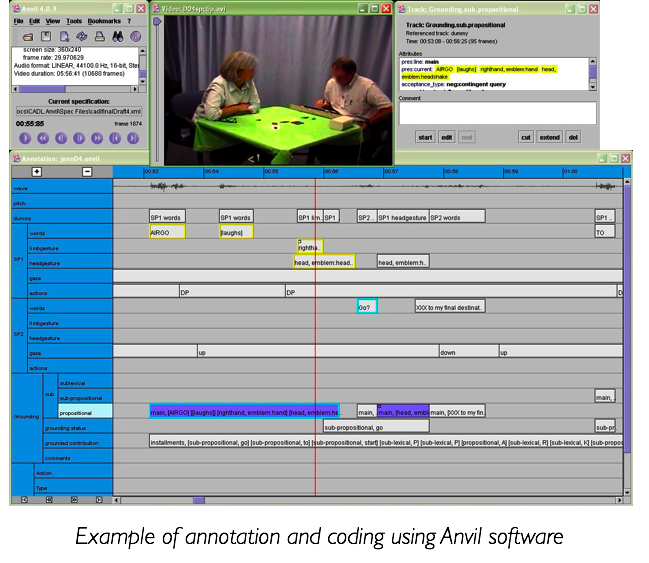|
Goals
Over the past decade, advances in Augmentative and Alternative Communication (AAC) have provided individuals with special purpose electronic devices for communication. These devices employ customized input interfaces, sophisticated vocabulary databases and search algorithms, synthetic speech output, and access to mainstream computer programs. Such innovations provide the technological infrastructure required for successful societal integration.
Despite these advancements, significant technologically-related performance barriers exist that significantly impede educational, vocational and social achievement. Documented problems include:
- Slow communication rates (<10 wpm) that limit education and workplace capabilities.
- Frequent problems accessing and controlling the AAC system during conversation tasks.
- Lack of linguistic precision and limited access to situation related vocabulary.
- Difficulties learning and using current AAC interfaces.
Developers want to make augmentative and alternative communication (AAC) devices that will create the most successful communication experience as possible for their users. However, device design decisions (and parameter settings and communication strategies) are presently based on hunches rather than empirical evidence. Speech language pathologists (SLPs) with clinical experience are regarded as the authorities and their intuition dictates device design, but they do not have time to validate hunches because they have large caseloads. Any laboratory research results rarely make it back to the device designers.
Research questions that need to be answered include:
- What performance-related problems do AAC users experience during communication and other work-related activities?
- How do these problems relate to limitations in technology design?
- How do they relate to the physical and cognitive capabilities of the user?
- What are the primary workload factors associated with AAC device use (e.g., physical, mental, temporal demands, frustration, effort)?
- What design features of AAC devices allow successful use in educational or employment settings?
Progress to Date
Higginbotham, D. J., Bisantz, A., Sunm, M., Adams, K., and Yik, F. (in press). The Effect of Context Priming and Task Type on Augmentative Communication Performance. Augmentative and Alternative Communication.
In this study, we compared AAC device use, task performance, and user perceptions across three tasks, in conditions where the AAC device used either was, or was not, primed with task specific vocabularies. We employed adult participants normal physical, cognitive and communication abilities in order to focus on device specific effects. Participants completed three tasks: a tangram puzzle, a map task, and a narrative task. Each task varied in terms of the communication symmetry and interaction requirements of participant roles. (For technical information on this experiment, link to Center for Excellence in Augmented Communication - Technotes)

In half the trials, the AAC device was primed with a task specific vocabulary. A priming effect of 12 to 25 percent keystroke savings over regular word prediction was demonstrated for the primed AAC systems.
Context priming showed a marginally significant effect on AAC device use as measured by keystroke savings, however, these advantages did not translate into higher level measures of rate, task performance, keystroke savings or user perceptions. In contrast, statistically significant process and performance differences were found across task type. Taken as a whole these findings suggest that keystroke-based measures of device use may not be predictive of high level performance.
Cornish, J., & Higginbotham, D. J. (in preparation). Grounding, gesture and co-construction: A micro-analytic analysis of device - mediated Interaction across interaction tasks.
Considerable discussion has been devoted to the ways in which AAC devices are employed during conversational interactions and the role of gesture and partner co-construction in the formulation of messages. These issues are central to the understanding and measurement of communication performance and the utility of newly emerging automated data logging technologies. In order to address these issues, we analyzed the real-time interactions of participants using the Anvil digital annotation and coding system (http://www.anvil-software.de). Using videos taken from the previous study, 12-minute segments of interaction were analyzed Communicative signals (speech, gesture, device use) were transcribed and coded for their role in the interaction. We developed a coding taxonomy based on the work of Herbert Clark (Clark and Brennen, 19991; 1996) to capture the communicative contributions of each individual and their role in grounding meaning. (download coding manual here)

Preliminary analysis of our data suggests the differing use of symbolic gestures (emblems, pointing, illustrators) and partner co-construction across the various communication tasks.
Luo, F. (in progress). Personal Narrative Telling by Individuals with ALS Who Use AAC Devices. Dissertation project in progress.
Higginbotham, D.J., Luo, F., Cornish, J. & Schmich, J. (in progress). Conversation task performance by individuals with ALS.
Next Steps
We are currently studying the communicative interactions of individuals of AAC device users with ALS and their long term partners. Fei Luo is completing a dissertation contrasting personal and non personal narrative production in order to study how partner involvement impacts on interaction. We are examining how individuals with ALS and their partners negotiate collaborative problem solving and direction giving tasks in order to better understand how differing task demands impact on interaction performance and success. We plan to use our results to better inform AAC design for next generation interactive communication aids.
Publications
Higginbotham, D.J., Bisantz, A., Sunm, M., Adams, K., & Yik, F. (in press). The Effect of Context Priming and Task Type on Augmentative Communication Performance. Augmentative and Alternative Communication.
Higginbotham, D.J. Kim, K. & Scally, C. (2007). The effect of the communication output method on augmented interaction. Augmentative and Alternative Communication,23(2), 140-153.
Presentations
Adams, K., Portis, K., Bizantz, A., Buckley, M., Higginbotham, D.J., Schindler, K., Sweeny, M. (2005). Experiences Using a Heuristic Evaluation Tool on AAC Software Interfaces. Proceedings of the RESNA 28th International Conference on Technology and Disability: Research, Design, Practice and Policy. *
|

